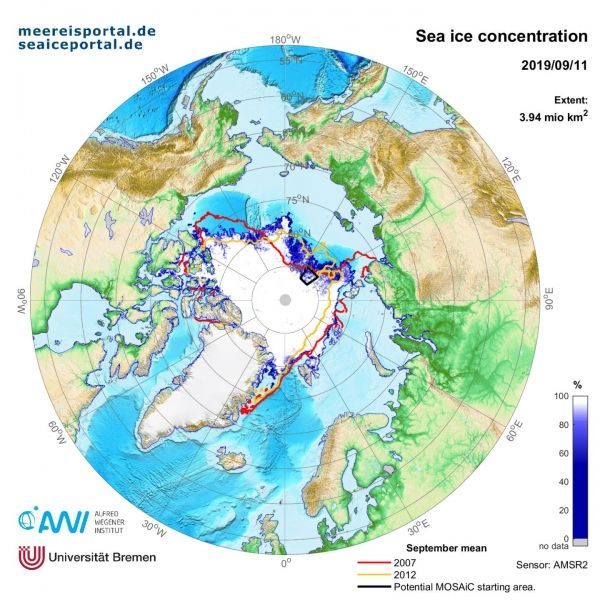The sea-ice extent in the Arctic is nearing its annual minimum at the end of the melt season in September. Only circa 3.9 million square kilometres of the Arctic Ocean are covered by sea ice any more, according to researchers from the Alfred Wegener Institute and the University of Bremen. This is only the second time that the annual minimum has dropped below four million square kilometres since satellite measurements began in 1979.
Until mid-August, it looked as though a notable record would be reached: the area of the Arctic Ocean covered by ice (defined as the area with a sea-ice concentration of more than 15 percent) from late March to early August was the smallest measured by satellites since 1979.
“Our satellite data show that between March and April 2019, there was an unusually large decrease in the ice extent, from which the Arctic sea ice was unable to recover,” explain Prof. Christian Haas, a geophysicist and head of the Sea Ice section at the Alfred Wegener Institute, Helmholtz Centre for Polar and Marine Research (AWI) and Dr Gunnar Spreen from the University of Bremen’s Institute for Environmental Physics. Since the second half of August, however, the seasonal reduction has slowed down, overlaid by short-term fluctuations. The lowest value so far for 2019 was 3.82 Million square kilometres, observed on 3 September. This means that this year, the September average could be below 4 million square kilometres for only the second time.
Read more at: Alfred Wegener Institute, Helmholtz Centre for Polar and Marine Research
Map of the Arctic sea ice extent on September 11, 2019. (Photo Credit: meereisportal.de)


